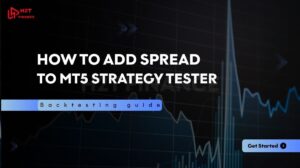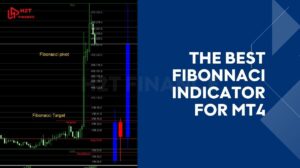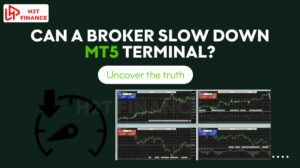In the fast-paced world of trading in the foreign exchange market, forex terms play a crucial role in shaping your understanding and success. Mastering these terms is not just an academic exercise; it is essential for making informed trading decisions, managing risk, and maximizing profits.
Whether you are a novice trader or looking to refine your skills, learning about key concepts such as pips, leverage, margin, short positions, and long positions can significantly enhance your trading strategies. In this article, we will cover vital semantic keywords like trading strategies, market analysis, risk management, buy and sell dynamics, and the amount of money needed to start trading.
This knowledge will not only boost your confidence but also equip you with the tools necessary to thrive in the often volatile world of foreign exchange. Join us as we explore the essential Beginner Basics of forex terms that every trader should know.
Key takeaways:
- Essential forex terminology: Understanding terms like pips, leverage, margin, short positions, and long positions is critical for effective trading and risk management.
- Market dynamics: Forex is the largest financial market globally, operating 24/5 with high liquidity, allowing traders to profit from currency pair price fluctuations influenced by economic, political, and market factors.
- Core trading concepts: Key terms such as bid/ask spread, stop-loss, take-profit, and lot sizes help traders execute strategies, manage capital, and navigate market volatility.
- Practical application: Applying terms in real trading scenarios enhances decision-making, from selecting currency pairs to setting risk management tools like stop-loss and take-profit orders.
- Learning resources: Online courses, trading platforms, glossaries, communities, books, and apps provide diverse ways to master forex terminology for beginners and advanced traders.
- Risk management focus: Terms like stop-loss, margin call, and risk-reward ratio are vital for protecting capital and ensuring sustainable trading practices.
- Continuous learning: While core terms remain consistent, evolving market trends and technologies introduce new terminology, requiring ongoing education for traders.
1. Understanding forex: The basics you need to know
Forex (Foreign exchange) is the global marketplace where currencies are bought and sold. It operates 24 hours a day, five days a week, and is the largest financial market in the world, with a daily trading volume exceeding $7.5 trillion. Traders participate in forex to profit from fluctuations in currency exchange rates, whether through short-term speculation or long-term investment strategies.

Unlike other markets, forex has no centralized exchange. Transactions occur over-the-counter (OTC) via a network of banks, brokers, and financial institutions. This structure allows for high liquidity and accessibility for traders worldwide.
Trading in the forex market involves currency pairs, where one currency is exchanged for another, for example, EUR/USD (Euro to US Dollar) or GBP/JPY (British Pound to Japanese Yen). Price movements are influenced by economic data, interest rates, geopolitical events, and market sentiment.
Key characteristics of the forex market:
- Global scale & accessibility: Open to anyone with an internet connection and trading account.
- High liquidity: Large volume of daily transactions enables quick execution of trades.
- 24/5 operation: Continuous trading from Monday to Friday across different time zones.
- Currency pairs: Traded in pairs, with base and quote currencies determining value.
- Leverage opportunities: Ability to control larger positions with smaller capital, increasing both potential gains and risks.
- Volatility: Prices can change rapidly due to economic, political, and market events.
2. Common forex terms and their meanings
In forex trading, understanding key terms and abbreviations is essential for effective communication and making informed trading decisions. Below is a list of common forex terms, arranged alphabetically, with concise and clear explanations to help you navigate the market with confidence.
2.1. Account deficit
- A situation where a country’s trade or payment balance is negative, with imports exceeding exports.
- Significance: Impacts currency value and economic policies.
2.2. Arbitrage
- Buying and selling an asset across different markets to profit from price differences.
- Example: Buying USD/JPY at a lower price on exchange A and selling at a higher price on exchange B.
- Significance: Exploits market inefficiencies for profit.
2.3. Ask price
- The price at which a trader can buy a currency pair.
- Significance: Always higher than the bid price, creating the spread.
2.4. Base currency
- The first currency listed in a currency pair.
- Example: In EUR/USD, EUR is the base currency.
- Significance: The currency being bought or sold in a trade.
2.5. Bear market
- A market characterized by a strong downward price trend, typically a decline of 20% or more from recent highs.
- Significance: Suitable for short-selling strategies to profit from falling prices.
2.6. Bid/Ask spread
- The difference between the bid (buy) price and the ask (sell) price.
- Example: If GBP/USD has a bid of 1.3000 and an ask of 1.3003, the spread is 3 pips.
- Significance: Represents the cost of trading, affecting profitability.
2.7. BP (Basis point)
- Equivalent to 0.01% (1/100 of 1%).
- Commonly used in discussions about interest rates or financial asset values.
- Significance: Measures small changes in interest rates or asset values.
2.8. Breakout
- When the price moves beyond a support or resistance level, signaling a new trend.
- Significance: Creates trading opportunities when the market breaks out of a consolidation zone.
2.9. Broker
- An intermediary that connects traders to the forex market.
- Significance: Provides trading platforms, price quotes, and support for executing trades.
2.10. Bull market
- A market with a strong upward price trend, typically rising over 20% from recent lows.
- Significance: Offers opportunities for buy strategies to capitalize on rising prices.
2.11. Candlestick chart
- A chart displaying the open, close, high, and low prices over a specific period.
- Significance: Used in technical analysis to predict price trends.
2.12. Carry trade
- A strategy of borrowing a currency with a low interest rate to invest in a currency with a higher interest rate.
- Example: Borrowing JPY (low interest rate) to buy AUD (high interest rate).
- Significance: Profits from interest rate differentials.
2.13. Central bank
- A financial institution responsible for managing monetary policy and issuing currency.
- Example: ECB (European Central Bank), Fed (Federal Reserve).
- Significance: Significantly influences currency value through interest rates and policies.
2.14. Consolidation
- A period where prices fluctuate within a narrow range, lacking a clear trend.
- Significance: Often precedes a breakout or reversal in the market.
2.15. Correlation
- The relationship between two currency pairs or assets, moving in the same or opposite directions.
- Example: EUR/USD and USD/CHF often have a negative correlation.
- Significance: Aids in risk management when building a portfolio.
2.16. Currency pair
- Two currencies traded together, consisting of a base currency and a quote currency.
- Example: In AUD/USD, AUD is the base currency, USD is the quote currency.
- Significance: The foundation of forex trading, determining trade value.
2.17. Day trading
- Buying and selling within the same trading day, without holding positions overnight.
- Significance: Reduces risk from overnight price fluctuations.
2.18. Divergence
- When price moves in the opposite direction of a technical indicator (e.g., RSI or MACD).
- Significance: Signals potential reversals or price corrections.
2.19. Drawdown
- The reduction in account value from its peak to its lowest point over a period.
- Example: An account dropping from $10,000 to $9,000 represents a 10% drawdown.
- Significance: Assesses risk and performance of trading strategies.
2.20. Economic indicator
- Economic data (e.g., GDP, CPI, unemployment rate) that impacts currency value.
- Significance: Helps traders predict market trends based on fundamental analysis.
2.21. Equity
- The total value of a trading account, including balance and unrealized profits/losses.
- Significance: Reflects the financial health of a trading account.
2.22. Fundamental analysis
- Evaluating asset value based on economic, financial, and political factors.
- Significance: Predicts long-term trends using macroeconomic data.
2.23. FX (Foreign exchange)
- The term for the global currency trading market.
- Significance: Encompasses all activities, platforms, and transactions related to forex.
2.24. Hedging
- Opening opposing positions to reduce risk from price fluctuations.
- Example: Buying EUR/USD and simultaneously selling USD/CHF to offset risk.
- Significance: Protects capital in volatile markets.
2.25. Leverage
- A tool allowing traders to control larger positions with smaller capital.
- Example: 1:50 leverage allows $1,000 to control a $50,000 position.
- Significance: Increases profit potential but also amplifies risk.
2.26. Limit order
- An order to buy or sell at a specific price or better.
- Significance: Ensures trades occur at desired price levels.
2.27. Liquidity
- The ease of buying or selling a currency pair without significantly affecting its price.
- Significance: High liquidity enables faster trades and lower spread costs.
2.28. Long strategy (LS)
- Buying a currency pair with the expectation that its price will rise.
- Significance: Suitable for predicting bullish market trends.
2.29. LOT
- A standardized trading size, with a standard lot equaling 100,000 units of the base currency.
- Types of lots:
- Mini lot: 10,000 units.
- Micro lot: 1,000 units.
- Significance: Helps traders manage risk and trade with flexible capital.
2.30. Margin
- The amount required to open and maintain a trading position.
- Significance: The minimum capital needed to use leverage.
2.31. Margin call
- A request to deposit additional funds to maintain a position when the account lacks sufficient margin.
- Significance: Prevents automatic position closure due to insufficient funds.
2.32. Market order
- An order to buy or sell immediately at the current market price.
- Significance: Ensures quick execution but may involve slippage.
2.33. Order book
- A list of pending buy and sell orders in the market.
- Significance: Provides insight into market depth and trader sentiment.
2.34. PIP (Percentage in point)
- The smallest unit of price movement for a currency pair.
- Example: EUR/USD rising from 1.1050 to 1.1051 is a 1-pip move.
- Significance: Used to calculate profits/losses and assess price volatility.
2.35. Position trading
- Holding positions for long periods (weeks, months, or years) based on long-term trends.
- Significance: Suited for traders focusing on fundamental analysis and major trends.
2.36. Quote currency
- The second currency listed in a currency pair.
- Example: In EUR/USD, USD is the quote currency.
- Significance: Represents the value needed to buy one unit of the base currency.
2.37. Resistance level
- A price level where prices often stop rising and tend to fall.
- Significance: Used to identify potential sell or short entry points.
2.38. Rollover
- The act of keeping a position open from one day to the next, often incurring a swap fee.
- Significance: Affects costs when holding trades overnight.
2.39. Scalping
- A short-term trading strategy targeting small profits from minor price movements.
- Significance: Ideal for traders seeking quick intraday trades.
2.40. Short sell strategy (SS)
- Selling a currency pair with the expectation that its price will fall.
- Significance: Suitable for predicting bearish market trends.
2.41. Slippage
- The difference between the expected price and the actual price at which a trade is executed.
- Significance: Common in volatile markets, affecting trading costs.
2.42. Stop entry order
- An order to buy or sell triggered when the price reaches a specific level.
- Example: Placing a buy order for EUR/USD at 1.1100 when the current price is 1.1050.
- Significance: Used to enter the market when a trend begins.
2.43. Stop loss (SL)
- An order to automatically close a trade when the price reaches a predetermined loss level.
- Example: Setting a stop loss 20 pips below the entry price closes the trade if the price drops 20 pips.
- Significance: Protects capital by limiting losses in adverse market conditions.
2.44. Support level
- A price level where prices often stop falling and tend to rise.
- Significance: Used to identify potential buy points in technical analysis.
2.45. Swap
- The cost or profit from holding a position overnight, based on interest rate differentials.
- Significance: Impacts the cost of long-term trades.
2.46. Take profit (TP)
- An order to automatically close a trade when a desired profit level is reached.
- Significance: Locks in profits without constant market monitoring.
2.47. Technical analysis
- Predicting prices based on historical data and price charts.
- Significance: Identifies entry/exit points using price patterns and indicators.
2.48. Trend
- The primary direction of price movement over a period, which can be upward, downward, or sideways.
- Significance: Helps traders align strategies with market direction.
2.49. Volatility
- The degree of price variation in a currency pair over a period.
- Significance: High volatility offers profit opportunities but increases risk.
2.50. Yield
- The percentage return from an investment.
- Significance: Measures the profitability of holding a currency or asset, often linked to interest rates or carry trade strategies.
3. How to use forex terms in real trading scenarios
Utilizing specific forex words helps in navigating the complexities of the market, managing risks, and executing trades successfully. When entering a trade, one of the first steps is to identify the currency pairs that align with your trading strategy.
For example, in a scenario where a trader believes the Euro will strengthen against the US Dollar, understanding terms like bullish and bearish becomes essential. A bullish sentiment indicates that the trader expects the currency to rise, prompting them to buy the EUR/USD pair and establish a long position.
Conversely, a bearish view would lead them to sell and create a short position. By using these terms correctly, traders can articulate their positions and predictions with clarity.
Another vital aspect of using forex trading terms is risk management. Terms such as stop-loss, take-profit, and leverage play a significant role in protecting capital. For instance, a trader might set a stop-loss order to minimize potential losses by automatically selling a currency pair when it reaches a certain price.
This risk management strategy, combined with the right leverage, allows traders to control their exposure in the market effectively. Proper usage of these terms not only enhances trading strategies but also helps in maintaining emotional discipline during volatile market conditions. Moreover, understanding economic indicators and their associated forex terms can significantly impact trading decisions.

Knowing how to interpret terms like GDP, CPI, and interest rates can provide insights into a country's economic health. If a trader is aware that a country's GDP is growing, they might interpret this as a sign to buy that nation's currency.
When deciding whether to engage in a short sell or establish a long position, traders must consider various factors such as market trends, economic indicators, and technical analysis. A short position is often appropriate when technical indicators suggest a downturn in a currency pair's value, while a long position might be preferred when fundamental analysis indicates strong economic growth.
Lastly, the ability to communicate using forex trading words is vital when engaging with other traders or brokers. Whether participating in forums, webinars, or one-on-one discussions, using the correct jargon can enhance credibility and ensure clearer communication.
For example, discussing a trade setup using terms like risk-reward ratio demonstrates a trader's understanding of effective trading strategies. In conclusion, utilizing forex terms accurately in real trading scenarios not only aids in executing trades but also fosters effective communication and risk management.
By mastering these terms, traders can enhance their understanding of the market, make informed decisions, and ultimately improve their trading outcomes.
See more related articles:
4. Resources for learning forex terms
Mastering forex terminology is essential for anyone aiming to succeed in the foreign exchange market. Whether you're a beginner or an experienced trader, a variety of learning resources are available to help you understand and confidently apply these terms in real trading scenarios. Below is a breakdown of the most effective ways to build your forex vocabulary.
4.1. Online courses
- Platforms such as Coursera, Udemy, and Khan Academy offer structured courses on forex trading tailored to different experience levels.
- These courses often include:
- Video tutorials
- Interactive quizzes
- Peer discussion forums
- Benefits: Provide a comprehensive learning path with guided instruction and real-world examples.
4.2. Trading platforms’ educational resources
- Leading platforms like MetaTrader and TradingView feature in-built educational tools.
- Topics range from basic terms to advanced trading concepts.
- Benefits: Learn in the same environment where you'll be trading, making the transition from theory to practice seamless.
4.3. Forex glossaries and financial websites
- Investopedia and BabyPips offer detailed glossaries and articles that define and explain thousands of forex terms.
- Terms are explained with real-life context and examples.
- Benefits: Quickly look up unfamiliar terms and deepen your understanding of market concepts.
4.4. Trading communities and forums
- Engage with experienced traders through platforms like:
- Forex Factory
- Reddit’s r/Forex
- These communities offer:
- Real-time discussions
- Explanations of terms in action
- Peer advice and mentorship
- Benefits: Gain practical knowledge and learn how professionals use terms like “short positions” or “stop loss” in live trading.
4.5. Books on forex trading
- Recommended titles include:
- Currency Trading for Dummies
- The Complete Guide to Forex Trading
- These books typically include:
- Glossary sections
- Real-world case studies
- Strategic insights
- Benefits: In-depth learning with a solid foundation of theory and practice.

4.6. Professional courses and trading academies
- Many financial institutions and online academies offer certified training programs.
- Courses often feature:
- Structured curriculum
- Practical exercises
- Simulated trading environments
- Benefits: Ideal for learners who prefer formal instruction and hands-on experience.
4.7. Mobile applications
- Apps like Forex Hero and Investopedia Simulator make learning accessible on the go.
- Features include:
- Bite-sized lessons
- Interactive quizzes
- Virtual trading
- Benefits: Convenient learning and instant application in a risk-free environment.
By leveraging these diverse learning resources, traders can build a strong foundation in forex terminology. Whether you prefer structured courses, self-guided reading, interactive communities, or mobile tools, there is no shortage of effective ways to master the language of forex trading. Strengthening your vocabulary not only improves your communication but also enhances your decision-making and strategic planning in the market.
5. Frequently asked questions about forex terms (FAQs)
5.1. What is the difference between a pip and a pipette in forex trading?
A pip is the standard unit for measuring price movements in forex, typically the fourth decimal place (0.0001) for most currency pairs. A pipette is one-tenth of a pip (0.00001), providing even more precise measurement of price changes. For example, if EUR/USD moves from 1.10501 to 1.10511, that's a 1 pip or 10 pipettes change.
5.2. How do margin and leverage work together in forex trading?
Margin is the amount of money you need to deposit to open and maintain a leveraged position. Leverage allows you to control a larger position with this smaller deposit. For example, with 1:100 leverage, a $1,000 margin lets you control a $100,000 position. While this amplifies potential profits, it also increases risk proportionally.
5.3. What's the best way for beginners to remember important forex terms?
The most effective way is through practical application. Start with a demo account where you can see these terms in action without risking real money. Create flashcards with terms on one side and definitions on the other. Join study groups or forums where you can discuss these terms with other traders. Regular practice and usage in context helps cement understanding better than memorization alone.
5.4. How often do forex trading terms change or evolve?
Core forex terms like pips, lots, and margin remain consistent, but the broader forex language evolves with technology and market developments. New terms emerge with trading innovations, regulatory changes, and market trends. For example, terms related to algorithmic trading have increased significantly in the past decade. Staying updated through industry news and continuing education is essential.
5.5. Is it necessary to learn all forex terms before starting to trade?
No, you don't need to learn all terms before starting, but understanding the fundamental ones is crucial for safe trading. Begin with terms related to basic operations, risk management, and position sizing (e.g., pips, lots, leverage, margin, stop-loss). Add to your knowledge gradually as you gain experience. Trading with a limited understanding of essential terms significantly increases your risk of losses.
5.6. How do forex terms differ across different trading platforms?
While core concepts remain the same, platforms may use slightly different terminology or abbreviations. For example, one platform might label a stop-loss order as "SL" while another spells it out. Some platforms have unique features with proprietary terms. When switching platforms, always review their glossary or help section to clarify any unfamiliar terms specific to that system.
5.7. What forex terms are most important for risk management?
Key risk management terms include stop-loss (an order to close your position at a specific price to limit losses), take-profit (an order to close your position at a profit target), margin call (notification that your account needs additional funds), liquidation level (when positions are automatically closed due to insufficient margin), and risk-reward ratio (comparison of potential loss to potential gain).
5.8. How do professional traders use forex terminology differently from beginners?
Professional traders typically use forex terms more precisely and in combination to express complex trading ideas quickly. They often incorporate slang and shorthand that might confuse beginners. While novices might focus on understanding individual terms, professionals integrate multiple concepts simultaneously, discussing trade setups that account for technical indicators, fundamental factors, and risk parameters all at once.
6. Conclusion: Mastering forex terms for trading success
In today's dynamic financial landscape, mastering forex terms is not merely advantageous it's essential for anyone serious about trading in the foreign exchange market. Throughout this comprehensive guide, we've explored the fundamental vocabulary that forms the backbone of successful currency trading, from understanding basic concepts like pips and leverage to more complex strategies involving short positions and long positions.
The journey to becoming proficient in forex trading begins with building a strong foundation of key words. As we've discussed, knowing when to buy and sell, how to establish short positions, and when to take long positions can significantly impact your trading outcomes.
The amount of money you allocate to different positions and your ability to execute short sell strategies effectively can be the difference between consistent profits and substantial losses. Remember that forex terms aren't just theoretical concepts they're practical tools that successful traders use daily.
By regularly refining your understanding of these terms and applying them in real trading scenarios, you'll develop the confidence and expertise needed to navigate market fluctuations strategically. We encourage you to utilize the resources outlined in this guide to deepen your knowledge of forex trading words.
Whether you're just starting out or looking to enhance your existing skills, the time invested in mastering these terms will yield substantial returns in your trading journey. Visit the forex Basics section at H2T Finance today, or subscribe to our newsletter to receive weekly digests of our most valuable forex content directly in your inbox.



